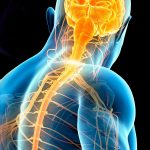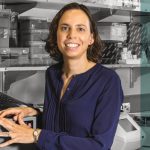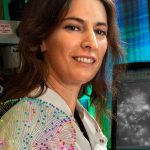For roughly one-third of people diagnosed with bipolar disorder, lithium is a miracle drug, effectively treating both their mania and depression. But once someone is diagnosed, it can take up to a year to learn whether that person will be among the 30 percent who respond to lithium. Salk Professor Rusty Gage, co–first authors Shani Stern and Renata Santos and colleagues report a way to predict, from neuronal firing patterns and with 92 percent accuracy, whether an individual with bipolar disorder will be a lithium responder. The work, which appeared online in Molecular Psychiatry on February 28, 2017, validates the lab’s 2015 discovery of a cellular basis for the disorder and could benefit not only those who will respond to lithium but also the vast majority who will not, sparing them an ineffective treatment.
Neuroscience
Hard choices? Ask your brain’s dopamine
Say you’re reaching for the fruit cup at a buffet, but at the last second you switch gears and grab a cupcake instead. Instead of moving left, your hand went right. Such split-second changes play a major role in diseases that involve problems with selecting an action, like Parkinson’s, OCD and drug addiction. In the March 9, 2017, online publication of the journal Neuron, Salk Professor Xin Jin, co–first authors Christopher Howard and Hao Li and colleagues report that the concentration of a brain chemical called dopamine governs decisions about actions so precisely that measuring the level in mice right before a decision allows researchers to accurately predict the outcome. The work may open new avenues for treating disorders both in cases where a person cannot select a movement to initiate as well as those in which someone cannot stop repetitive actions.
Read News ReleaseBrain’s immune cells linked to Alzheimer’s, Parkinson’s, schizophrenia
Scientists have, for the first time, characterized the molecular markers that make the brain’s front lines of immune defense—cells called microglia—unique. In the process, they discovered further evidence that microglia may play roles in a variety of neurodegenerative and psychiatric illnesses, including Alzheimer’s, Parkinson’s and Huntington’s diseases as well as schizophrenia, autism and depression. Professor Rusty Gage and a collaborator from UC San Diego reported in Science on May 25, 2017, that genes previously linked to neurological diseases are turned on at higher levels in microglia compared to other brain cells. While the link between microglia and a number of disorders has been explored in the past, the new study offers a molecular basis for this connection.
Read News ReleaseA star is born: lesser-known brain cell takes center stage
Neurons have long enjoyed the spotlight in neuroscience—and for good reason: they are incredibly important cellular actors. But, increasingly, star-shaped support cells called astrocytes are being seen as more than bit players in the brain’s rich pageant. The lab of Rusty Gage reported a new method of deriving astrocytes from stem cells, opening up broad avenues for research into diseases with inflammatory features. The protocol, which is described in the June 6, 2017, issue of Stem Cell Reports, offers a faster and more effective way to obtain astrocytes for brain research that could yield breakthroughs for treatments of such diverse conditions as stroke, Alzheimer’s or depression.
Read News ReleaseThe Internet and your brain are more alike than you think
Although we spend a lot of our time online nowadays, few of us know about the mathematical algorithms that manage how our content is delivered. But deciding how to route information fairly and efficiently through a distributed system with no central authority was a priority for the Internet’s founders, says Salk Assistant Professor Saket Navlakha. He and his coauthor from Yale University show that an algorithm used for the Internet called additive-increase multiplicative-decrease (AIMD) is also at work in the human brain, an insight that improves our understanding of engineered and neural networks and potentially even learning disabilities.
Read News ReleaseHow cells divide tasks and conquer work
Despite advances in neuroscience, the brain is still very much a black box—no one even knows how many different types of neurons exist. Salk Associate Professor Tatyana Sharpee has used a mathematical framework to better understand how new cell types spontaneously arise and how the various types divide work among themselves. The theory could help reveal how cell types achieve greater efficiency and reliability or how disease results when the division of labor is not as effective.
Read News ReleaseHow the brain recognizes what the eye sees
If you think self-driving cars can’t get here soon enough, you’re not alone. But programming computers to recognize objects is very technically challenging, especially since scientists don’t fully understand how our own brains do it. How precisely this recognition happens is still a mystery, in part because neurons that encode objects respond in complicated ways. Associate Professor Tatyana Sharpee and Research Associate Ryan Rowekamp have developed a statistical method that takes these complex responses and describes them in interpretable ways, which could be used to help decode vision for computer-simulated vision. The duo analyzed how neurons in a critical part of the brain, called V2, respond to natural scenes, providing a better understanding of vision processing and how the brain works in general.
Featured Stories
 Untangling the mysteries of the spinal cordConverging research and innovative technologies are tackling some of the deadliest motor diseases.
Untangling the mysteries of the spinal cordConverging research and innovative technologies are tackling some of the deadliest motor diseases. An interview with Diana HargreavesInside Salk talked with Hargreaves about why she prefers smaller intellectual environments, what excites her about the science she does at the Institute, and how she thinks about being a woman in science.
An interview with Diana HargreavesInside Salk talked with Hargreaves about why she prefers smaller intellectual environments, what excites her about the science she does at the Institute, and how she thinks about being a woman in science. Delving into the best of both worlds with Shani SternAs the only electrophysiologist in the lab, Stern uses her engineering expertise to delve into the biological mysteries that most intrigue her, particularly bipolar disorder.
Delving into the best of both worlds with Shani SternAs the only electrophysiologist in the lab, Stern uses her engineering expertise to delve into the biological mysteries that most intrigue her, particularly bipolar disorder.
















































